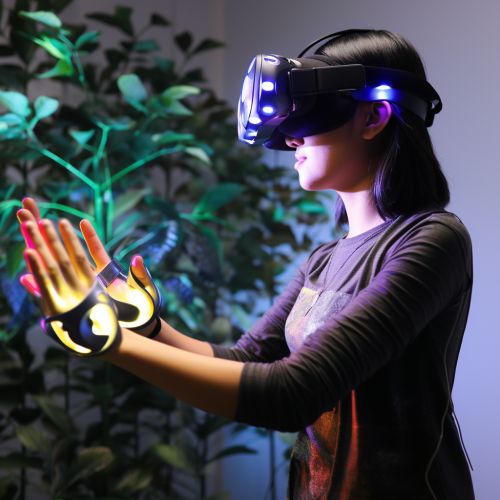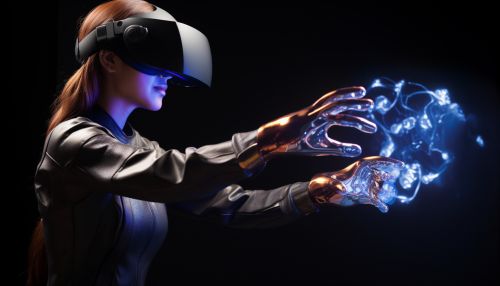Haptic Technology in Virtual Reality
Introduction
Haptic technology, also known as kinaesthetic communication or 3D touch, refers to any technology that can create an experience of touch by applying forces, vibrations, or motions to the user Haptic Technology. This tactile information is generally known as force feedback in medical, gaming and military applications. Haptic technology has made it possible to investigate how the human sense of touch works by allowing the creation of carefully controlled haptic virtual objects. These objects are used to systematically probe human haptic capabilities, which would otherwise be difficult to achieve. These research tools contribute to the understanding of how touch and its underlying brain functions work Human Brain.
Haptic Technology in Virtual Reality
The incorporation of haptic technology in virtual reality (VR) systems significantly enhances the immersive experience. By engaging the sense of touch, users can interact with virtual environments in ways that were previously impossible. This has opened up new possibilities for a wide range of applications, from gaming and entertainment to training and education Virtual Reality.


Types of Haptic Feedback in VR
There are several types of haptic feedback that can be used in VR systems, each with its own advantages and disadvantages. These include vibration feedback, force feedback, and tactile feedback.
Vibration Feedback
Vibration feedback, also known as vibrotactile feedback, is the most common form of haptic feedback used in VR systems. It involves the use of actuators to create vibrations on the user's skin. This can be used to simulate a variety of sensations, such as the feeling of a phone vibrating in a virtual pocket or the sensation of driving over rough terrain in a virtual vehicle Vibration Feedback.
Force Feedback
Force feedback is a type of haptic feedback that involves the application of forces to the user's body. This can be used to simulate the sensation of pushing, pulling, or lifting virtual objects. Force feedback devices, such as haptic gloves or exoskeletons, can provide a high degree of realism, but they are often expensive and complex to implement Force Feedback.
Tactile Feedback
Tactile feedback involves the use of actuators to create sensations on the surface of the skin. This can be used to simulate the feeling of texture, temperature, or pressure. Tactile feedback devices can provide a high degree of realism, but they are often complex and expensive to implement Tactile Feedback.
Applications of Haptic Technology in VR
The use of haptic technology in VR has a wide range of applications. These include gaming, training and education, healthcare, and remote control of machinery.
Gaming
In the gaming industry, haptic technology can be used to enhance the immersive experience of VR games. By providing tactile feedback, players can interact with virtual objects in a more realistic and engaging way VR Gaming.
Training and Education
Haptic technology can be used in VR training and education applications to provide a more immersive learning experience. For example, medical students can practice surgical procedures in a virtual environment, receiving tactile feedback as they manipulate virtual tools and tissues VR Training.
Healthcare
In healthcare, haptic technology in VR can be used for rehabilitation and therapy. For example, patients recovering from stroke can use VR systems with haptic feedback to practice and regain motor skills VR Healthcare.
Remote Control of Machinery
Haptic technology can also be used in VR systems for the remote control of machinery. For example, operators can use a VR system with haptic feedback to control a robotic arm, feeling the forces that the arm encounters as if they were manipulating the arm directly Remote Control.
Future of Haptic Technology in VR
The future of haptic technology in VR is promising, with ongoing research and development aimed at improving the realism and effectiveness of haptic feedback. This includes the development of new types of haptic devices, such as wearable haptic suits and haptic gloves, as well as improvements in haptic rendering algorithms and techniques Future of Haptic Technology.
